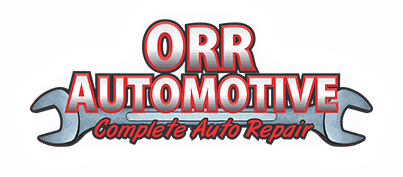Turbochargers, also known as turbos, are devices that increase the power output of an internal combustion engine by forcing more air into the combustion chamber. This is done by using the exhaust gases from the engine to spin a turbine, which in turn spins a compressor that forces more air into the engine.
The main benefit of using a turbocharger is that it allows an engine to produce more power without increasing its size. This is particularly useful for vehicles where space is limited, such as cars and trucks. Turbocharged engines also tend to be more fuel efficient than naturally aspirated engines, as they are able to extract more energy from a given amount of fuel.
Turbochargers are also commonly used in diesel engines, as they can help to increase the efficiency of these engines by allowing them to run at higher compression ratios. This results in more complete combustion of the fuel, which leads to lower emissions and better fuel economy.
However, there are also some downsides to using a turbocharger. One is that they can add complexity to an engine, which can make them more difficult to maintain. Additionally, turbocharged engines can suffer from "turbo lag", which is a delay in the delivery of power caused by the time it takes for the turbocharger to spool up. This can make the engine feel less responsive at low speeds.
Despite these downsides, turbochargers have become increasingly popular in recent years, and are now used in a wide range of vehicles, from sports cars to family sedans. With advances in technology, turbocharged engines are becoming more reliable and efficient, making them an attractive option for those looking to boost their vehicle's power and fuel economy.
Superchargers vs Turbochargers: Which is Better for Your Vehicle?
If you’re looking to increase the performance of your vehicle, you may be wondering whether a supercharger or a turbocharger is the better option. Both are popular options for increasing horsepower and torque, but they work in different ways and have different advantages and disadvantages. In this blog post, we’ll explore the differences between superchargers and turbochargers and help you decide which one is right for your vehicle.
Superchargers
Superchargers are mechanical devices that increase the amount of air and fuel that can be burned in an engine. They do this by compressing the air that is drawn into the engine, which allows more fuel to be added and more power to be produced. Superchargers are typically belt-driven and are powered by the engine itself, which means they produce boost immediately and continuously.
One of the biggest advantages of a supercharger is that it produces instant boost, which means there is no lag time between when the driver hits the gas pedal and when the engine responds. This can make for a more responsive and exciting driving experience. Superchargers are also relatively simple and easy to install, and they tend to be more reliable than turbochargers.
However, superchargers do have some downsides. Because they are powered by the engine itself, they can put extra strain on the engine and reduce its lifespan. They can also be less efficient than turbochargers, which can result in lower fuel economy. Finally, superchargers tend to be more expensive than turbochargers, which can make them less accessible for some drivers.
Turbochargers
Turbochargers are also mechanical devices that increase the amount of air and fuel that can be burned in an engine, but they work in a slightly different way. Instead of being powered by the engine itself, they use exhaust gases to spin a turbine, which then compresses the air that is drawn into the engine. This means that there can be a slight lag time between when the driver hits the gas pedal and when the engine responds, although modern turbochargers are designed to minimize this lag.
One of the biggest advantages of a turbocharger is that it can be more efficient than a supercharger. Because it uses exhaust gases to spin the turbine, it doesn’t put as much strain on the engine and can produce more power with less fuel. Turbochargers can also be less expensive than superchargers, although this can vary depending on the specific make and model.
However, turbochargers also have some downsides. Because they rely on exhaust gases to spin the turbine, they can produce more heat than superchargers, which can lead to overheating and other issues if not properly managed. They can also be more complicated and difficult to install than superchargers, which can make them more expensive in terms of labor costs.
Which One is Right for You?
Ultimately, the choice between a supercharger and a turbocharger will depend on your specific needs and preferences. If you’re looking for instant power and responsiveness, a supercharger may be the better option. If you’re looking for efficiency and lower fuel consumption, a turbocharger may be the way to go. Ultimately, both options can be effective ways to increase the performance of your vehicle, so it’s worth doing your research and consulting with a professional to determine which one is right for you.
Serving the inland empire Monclair Claremont Pomona Upland Chino Ontario La Verne Rancho Cucamonga Eastvale and more!









Add new comment